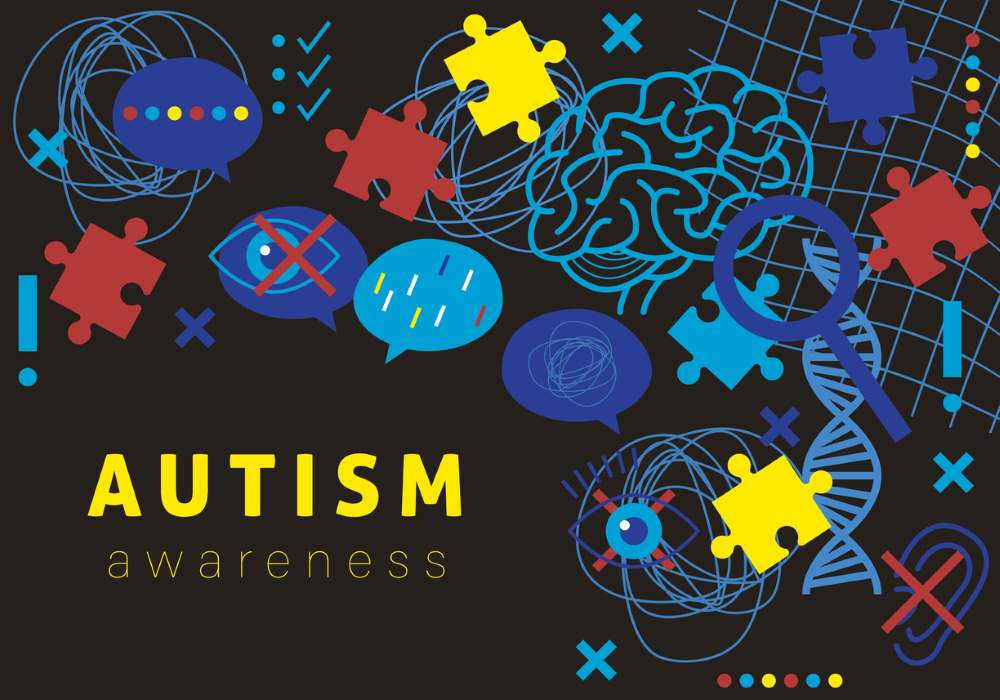
Home is a place where we can be who we are and unwind from the stresses of the day. This is especially true for children who have autism. For these children, home isn’t just a place to relax — it’s a place where they can let loose, find comfort in their environment, and explore safely.
Some children with autism may need special accommodations to make sure their home environment provides the right support. Read on for eight ways you can make home a place where both you and your child get to feel safe and valued.
1. Know Your Child’s Needs
Every child with autism is wonderfully unique, so what works for one may not work for another. In order to build the right home environment for your family, take some time to observe your child’s behavior, preferences, and triggers. Do bright lights or loud noises cause distress? Are there specific activities that bring them joy?
Embracing your child’s individuality can help you tailor your approach to their strengths and needs. Validating their feelings and creating a safe space for exploration can also help you build trust and support a deeper connection between you.
2. Practice Communication
Communication is an important part of building meaningful connections. Supporting children’s ability to communicate can give them a foundation they can build on for the rest of their lives.
Some children with autism may benefit from tools like picture boards or apps to express themselves. You can also encourage shared activities, like reading a book together or building with blocks.
Celebrate small victories in communication, whether it’s a new word or a simple gesture. Patience and consistency are key. When we focus on modeling clear, calm communication, with time, our children can follow suit.
3. Create a Structured Environment
Routine provides a sense of security and predictability for people with autism. Develop a consistent daily schedule, including meals, playtime, and bedtime, to help them feel in control of their day and encourage independence.
Visual schedules or color-coded charts are another way to help children understand what to expect throughout the day. Designate specific areas in the home for various activities, such as a quiet corner for calming down or a table for crafts.
4. Encourage Positive Behavior
Positive reinforcement can encourage your child to develop healthy habits and skills. Behaviors you’d like to support, like using utensils during meals or playing with others, can be rewarded with praise or their preferred activity.
You can set children up for success by breaking down new tasks into manageable steps and celebrating successes along the way to build confidence. When challenges arise, families can try to be patient and understanding, and gently redirect these behaviors.
5. Support Social Skills
To support a child’s social development, look for opportunities for interaction in a safe, controlled way. Playdates with other children who have similar interests can help your child practice sharing, taking turns, and understanding emotions.
Simple activities like playing “Simon Says” or practicing parallel play can also teach your child important social cues. Make sure you model appropriate behaviors — like making eye contact or expressing gratitude — and give your child time to observe you and practice on their own. Remember, social development is a gradual process, and each small step forward is a victory.
6. Prioritize Sensory Needs
Many children with autism have sensory sensitivities that can make certain environments feel overwhelming and unsafe. To help combat this, we can build a sensory-friendly space at home to provide our children with a retreat when they need a break.
Consider adding soft lighting, noise-canceling headphones, or weighted blankets to help them feel calm and relaxed. You can also add sensory-friendly activities such as water play, sensory bins, or a rocking chair.
7. Work With Professionals
When it comes to supporting children with autism, identifying the warning signs early is key. Board certified behavior analysts (BCBAs) can help create strategies to support your child's development in the ways they need it most, focusing on areas like communication, behavior, and social skills.
While your BCBA helps your child, follow along to track their progress and suggest adjustments as needed. Parent training programs can also provide you with tools and techniques to learn how to support your child at home. The more you collaborate with professionals, the better you can advocate for your child’s needs.
8. Take Care of Yourself
As a caregiver, it’s important to prioritize your own well-being, even when you already are so busy. Taking time for self-care helps you keep the energy and patience you need to care for your child.
This might mean taking breaks, creating self-care routines, seeking support from friends and family, or finding activities that bring you joy. Building a network of fellow parents and professionals can also be a great way to have some extra support, and they may even guide you to new resources.
Wrapping Up: Helping Children With Autism Thrive
Creating a happy home for your child with autism begins with understanding their unique needs and building an environment to support those needs. By incorporating structure, encouraging communication, and addressing sensory preferences, you can turn your home into a place that’s comforting for everyone involved.
Working with professionals and making time for self-care can also give you the tools and energy you and your child need to grow together. Remember, every step forward is a reason to celebrate!
Brad Zelinger is the founder and CEO of Stride Autism Centers.



























